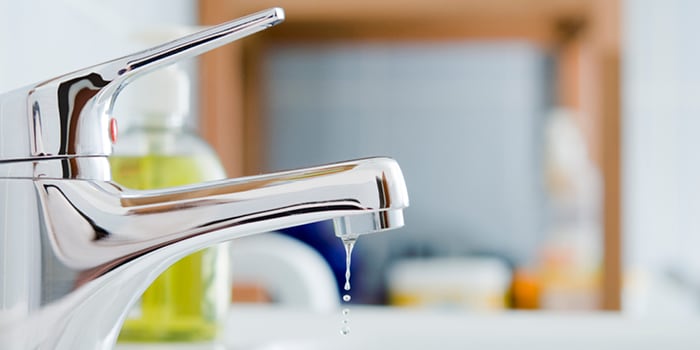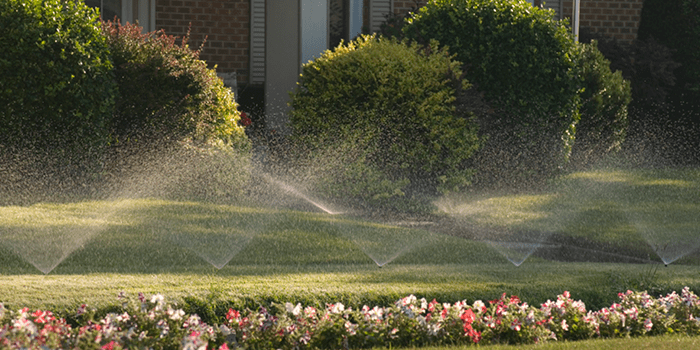Water Conservation Tips for Managed Communities

More and more, severe drought conditions are testing the limits of water supply. In October 2024, record-setting droughts affected more than 78% of the U.S. population. Drought can reduce water levels in reservoirs, lakes, and ponds, leading to water shortages. As warmer months approach, extreme dryness and increased fire risks are likely to follow.
To continue operating at its best during drought season, it’s important for your homeowners’ association (HOAs) to get ahead. Implementing water-saving measures can help you save costs, improve water quality, and more. Just remember to always follow local watering restrictions and HOA landscaping and architectural rules. Read on for water-conservation tips your community can practice now.
Common Water Wasting Practices in HOAs
Managing a community is an all-encompassing job, and it can be difficult to monitor weather conditions and watering schedules. The most common ways associations lose water include:
- Watering in the rain. Automatic sprinklers run as scheduled, regardless of the weather. Watering when it’s raining wastes water and can oversaturate landscaping.
- Excessive watering. Too much water can cause waterlogged areas to run off into the streets or storm drains rather than the water being absorbed into the soil.
- Watering non-landscaped areas. Sprinklers with inadequate pressure or those pointing in the wrong direction might water sidewalks more than landscaping.
- Leaking sprinkler heads. Often spotted after a surprise water bill, broken sprinkler heads and pipes can leak water day and night without you knowing.
- Watering at the wrong time of day. By running sprinklers at improper times, you risk losing much of the water to evaporation and daytime winds.
Have water damage and need to file a claim? Read “HOA Insurance Claims Process: A Step-by-Step Guide” to learn what happens next.
Benefits of Water Conservation for HOAs
Knowing how to save water will benefit your association and the environment in many ways. Here’s how.
Long-Term Cost Savings
Water conservation reduces the association’s water bill, which can significantly add up over time. This also translates to lower energy and sewage costs when the community collectively uses water more efficiently.
Attracting Eco-Conscious Buyers
Prioritizing eco-friendly practices like water conservation can attract younger buyers and people who appreciate sustainable living. By increasing interest in your HOA, you also boost home values and community awareness.
Protecting the Ecosystem
How does water conservation help the environment? Conserving water protects your local ecosystem by taking less water from nearby sources. Full rivers, lakes, and reservoirs can support wildlife, sustain the environment, and meet needs during droughts.
Improving Water Quality
Using less water means there’s less polluted water to treat. Water that’s tainted with waste or chemicals can potentially circulate back into the water supply, lowering the quality of your community’s water.
Water Conservation Strategies for Common Areas
HOA water conservation practices set a good example for residents while lowering the cost of water for the association. Here are several easy ways your HOA can conserve water in shared spaces:
- Inspect pipes and plumbing equipment for leaks or damage.
- Consider investing in water fixtures that automatically shut off.
- Install low-flow toilets, faucet aerators, and other water-saving fixtures.
- Take steps to minimize evaporation in pools and fountains.
- Consider investing in a greywater recycling system.
- Ask your local water utility provider for other water-saving tips.

Water-Efficient Landscaping Practices
Enhancing landscaping to prioritize water efficiency can greatly reduce water usage. You’ll need less water to keep community grounds neat, vibrant, and harmonious. Some water-saving rules you might want to incorporate include:
- Plant drought-resistant plants native to your region’s climate.
- Use mulch to retain moisture and keep soil from drying too quickly.
- Check sprinkler systems regularly to ensure efficiency and proper water delivery.
- Look into hardscaping to minimize water use while maintaining visual standards.
- Follow your area’s designated watering schedules and restrictions.
Efficient Irrigation Systems
Aside from community pools, landscaping irrigation systems are arguably where the most water consumption occurs. Maintaining or upgrading your sprinklers and watering system can help your association use water more efficiently. Try these different irrigation systems to save water:
- Drip irrigation. This system uses small tubing that delivers a steady drip of water directly to plant soil. It reduces water usage while keeping plants healthy.
- Smart irrigation. Much like smart thermostats and appliances, smart irrigation incorporates technology. The system monitors weather and environmental conditions and adjusts water usage accordingly.
- Traditional sprinklers. When using a traditional sprinkler system, carefully adjust watering time and frequency to minimize water waste.
- Hand-watering. While this doesn’t work for every community, having your landscaping crew hand-water the grounds provides manual control over water usage. In some cases, this can help with conservation.
Related: "Seasonal HOA Maintenance Tips"
Educating Residents on Water Conservation
As the association highlights water conservation, it’s essential to get homeowners involved in these efforts. Educating residents on water efficiency and its benefits will ultimately help reduce water waste, protect the environment, and encourage community through a shared goal.
There are a few ways HOA board members can spread the word on water conservation, such as:
- Sharing water-saving tips on the community website or in the newsletter
- Hosting a water conservation expert at an HOA educational seminar or event
- Holding a community meeting to share water-efficient practices in the home
- Providing an easy way to report water waste to the HOA board
8 Easy Ways to Go Green Right Now
Industry-wide, green standards—like water conservation measures, responsible use of renewable resources, a focus on indoor and outdoor air quality, and sustainable living practices—are now prioritized in a way that they’ve never been before.
Putting these water-conservation tips into practice will help your community decrease your environmental impact, but there’s much more you can do. Read “Eco-Friendly Community: 8 Easy Ways to Go Green Right Now” to learn how to go green and get on the right path to sustainability.